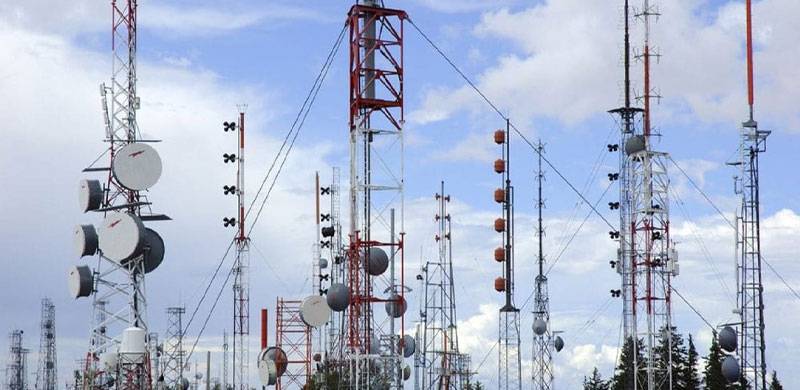
For the past year, Pakistan's liquidity crisis has been a frequent topic of discussion, with imports being one of the primary drains on the country's reserves, particularly those related to fuel.
However, a major contributor to this fuel consumption are telecom towers. As per the Alternative Energy Development Board (AEDB), “The mobile tower industry has emerged as Pakistan’s largest diesel fuel consumption, using around 1.2 billion liters per year.”
A permanent feature for most mobile tower sites across the country are diesel generators. The need for these stems from the fact that the power infrastructure is unreliable and prone to frequent failures. A glimpse of that was experienced earlier this year. “Amid a country-wide power outage, almost half of around 45,000 telecom towers were rendered inoperative by Monday evening due to a lack of fuel and other technical reasons, and as a result telecom and internet links were cut off with most of the remote and some urban parts of Pakistan,” reported Dawn on January 24, 2023.
Further, a significant portion of operational expenses for telcos are attributed to power and fuel costs, due to the high energy consumption of these tower sites.
“High inflation and the elimination of energy subsidies impacted utility prices: diesel +139% YoY, electricity +69% YoY, negatively impacting EBITDA margin,” read a report by Jazz’s parent VEON.
This adds to the vows of the sector which is already experiencing shrinking profit margins and an inability to repatriate profits back to their overseas headquarters.
What does a solution look like?
As per the Renewable Energy for Mobile report by GSMA, “Today there is broad consensus across the telecom industry that transitioning from off-grid or bad-grid towers to green is advantageous. Even where diesel prices are low, renewable energy systems are considered cost competitive with diesel generators when the capital expenditure of both options are amortized over the medium term (often four to five years), even for most off-grid and bad-grid sites. Deploying on-site solar battery systems also reduces energy-related operational expenditure and the challenges associated with regularly transporting diesel fuel to remote locations.”
The same report, however, pointed out that a lack of enabling telecom and energy sector policies and regulatory frameworks serves as one of the impediments for telcos to transition to alternative energy sources. This also holds true in the case of Pakistan where the telecom sector is still deprived of an industry status as far as the power regulator is concerned.
“The plea by the telecom companies was to change the category of the sector from commercial to industrial, which would have meant lower power tariffs. The demand was based on the argument that multiple laws consider the telecom sector as an industry, therefore, the National Electric Power Regulatory Authority (NEPRA) should also do the same,” read an article in Profit.
Therefore, deliberation on this front and rationalization of taxation on renewable energy equipment for telcos might save the country a significant portion of the import bill in the future.
However, a major contributor to this fuel consumption are telecom towers. As per the Alternative Energy Development Board (AEDB), “The mobile tower industry has emerged as Pakistan’s largest diesel fuel consumption, using around 1.2 billion liters per year.”
A permanent feature for most mobile tower sites across the country are diesel generators. The need for these stems from the fact that the power infrastructure is unreliable and prone to frequent failures. A glimpse of that was experienced earlier this year. “Amid a country-wide power outage, almost half of around 45,000 telecom towers were rendered inoperative by Monday evening due to a lack of fuel and other technical reasons, and as a result telecom and internet links were cut off with most of the remote and some urban parts of Pakistan,” reported Dawn on January 24, 2023.
Further, a significant portion of operational expenses for telcos are attributed to power and fuel costs, due to the high energy consumption of these tower sites.
“High inflation and the elimination of energy subsidies impacted utility prices: diesel +139% YoY, electricity +69% YoY, negatively impacting EBITDA margin,” read a report by Jazz’s parent VEON.
This adds to the vows of the sector which is already experiencing shrinking profit margins and an inability to repatriate profits back to their overseas headquarters.
What does a solution look like?
As per the Renewable Energy for Mobile report by GSMA, “Today there is broad consensus across the telecom industry that transitioning from off-grid or bad-grid towers to green is advantageous. Even where diesel prices are low, renewable energy systems are considered cost competitive with diesel generators when the capital expenditure of both options are amortized over the medium term (often four to five years), even for most off-grid and bad-grid sites. Deploying on-site solar battery systems also reduces energy-related operational expenditure and the challenges associated with regularly transporting diesel fuel to remote locations.”
The same report, however, pointed out that a lack of enabling telecom and energy sector policies and regulatory frameworks serves as one of the impediments for telcos to transition to alternative energy sources. This also holds true in the case of Pakistan where the telecom sector is still deprived of an industry status as far as the power regulator is concerned.
“The plea by the telecom companies was to change the category of the sector from commercial to industrial, which would have meant lower power tariffs. The demand was based on the argument that multiple laws consider the telecom sector as an industry, therefore, the National Electric Power Regulatory Authority (NEPRA) should also do the same,” read an article in Profit.
Therefore, deliberation on this front and rationalization of taxation on renewable energy equipment for telcos might save the country a significant portion of the import bill in the future.

